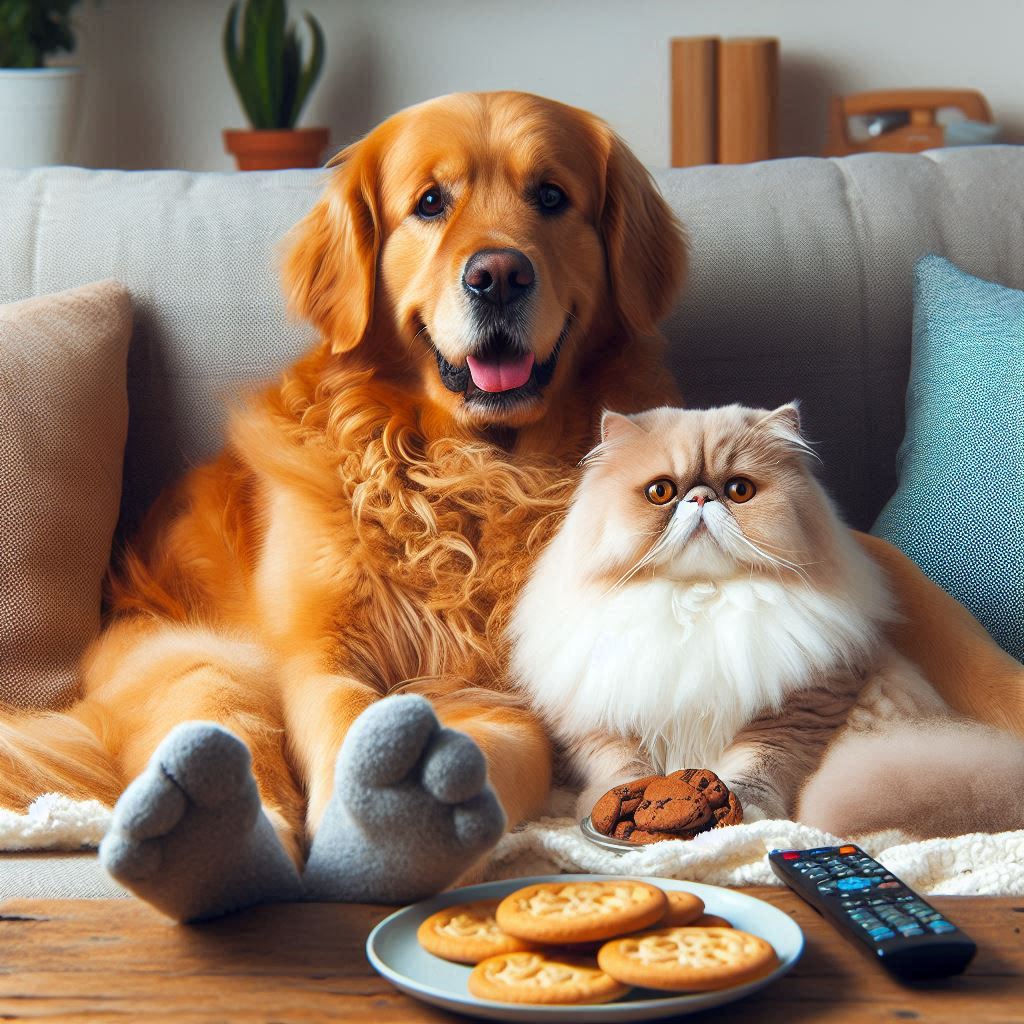Pet obesity is a serious issue. According to the Association for Pet Obesity Prevention (APOP), 59.5% of cats and 55.8% of dogs in the United States are overweight or obese. Obesity is an accumulation of excess body fat resulting in body weight over 15% of optimum.
While some effects of obesity can be reversed through diet change and physical activity, sometimes obesity can cause lasting damage. The more weight that a pet gains and the longer it stays on the body, the more severe the damage to the body will be. That’s why it’s important to recognize the dangers of pet obesity, regularly check for signs of obesity, and take steps to prevent your pet from becoming overweight.
The Dangers of Pet Obesity
Some pet owners may not be concerned if their pet is carrying some extra weight. However, even a pound or two of additional fat on some dogs and cats can place significant stress on the body. PetMD points out that pets can develop a variety of conditions as a result of excess weight, including:

How to Tell If Your Pet Is Overweight
Many pet owners won’t notice that their dog or cat is gaining weight, especially if the weight gain is gradual. Sometimes it’s only noticed after the animal starts slowing down significantly. In many cases, the veterinarian will be the one to notice your pet’s physical changes.
You can easily check if your pet is overweight with these three steps:
- While your pet is standing, you should be able to easily feel the ribs and spine by lightly running your fingers across your pet’s midsection.
- When you look down on your pet from above, you should see an hourglass figure or an indentation near the midsection.
- Observe your pet from the side. You should see a slight tuck or upward slope of the tummy.
If you can’t easily feel the ribs or if the abdomen hangs low or has a more tubular shape, you should consult with your veterinarian about your pet’s weight.
Ideal Dog and Cat Weight Ranges
Just as ideal weight ranges can vary for different people, the same is true for dogs and cats. As a starting point, the APOP suggests ideal weight ranges for a variety of popular breeds. It’s important to note that these ranges are simply a starting point and that each pet should have its specific body condition assessed by a vet. If your pet falls outside of these ideal weight ranges, talk to your vet about getting a further assessment.
How to Manage Your Pet’s Weight
Whether you’re trying to be proactive or if your pet is already overweight, the two keys to weight management are diet and exercise. Weight loss for pets is a slow process, so patience is key. It’s important to talk to your veterinarian before putting your pet on a diet as there may be an underlying medical condition causing the excess weight.
Your vet may suggest feeding your pet a certain food, such as a reduced-calorie pet food, and giving smaller portions to your pet. Your vet can also help develop an exercise plan specific to your pet’s age, weight, and breed. As a general guideline, dogs should get at least 30 minutes of physical activity a day and cats should get three 5-minute intense play periods. Of course, these guidelines will vary depending on breed, age, and physical abilities.
Some exercise ideas for dogs include walking, swimming, and ball retrieving. If you have a cat, you may have to get a little more creative. Playing with a laser pointer or feather duster are good idea to get your cat moving.
Daily Caloric Needs for Dogs and Cats
A dog or cat’s caloric needs will vary depending on lifestyle, activity level, genetics, and medical conditions. As a general guideline, the APOP outlines the approximate daily caloric needs of average indoor pets. It’s important to note that your pet will probably be fed fewer calories if he or she needs to lose weight.
Approximate Daily Caloric Needs for Average Indoor Pets
Cats
10 Lb - 180 to 200 calories
Dogs
10 Lb - 200 to 275 calories
• 20 Lb - 325 to 400 calories
• 50 Lb - 700 to 900 calories
• 70 Lb - 900 to 1050 calories
• 90 Lb - 1100 to 1350 calories
Pet obesity does more than impair your pet’s health. It can also negatively impact your pet’s quality of life and life expectancy. At Lots of Love Pet Products, we want every pet to have the best life possible. Healthily managing your pet’s weight will help him live a longer, healthier life!

 DOG HEALTH SUPPLEMENTS
DOG HEALTH SUPPLEMENTS DOG DIGESTIVE SUPPLEMENTS
DOG DIGESTIVE SUPPLEMENTS EYE & EAR DROPS
EYE & EAR DROPS SKIN & COAT SUPPLEMENTS
SKIN & COAT SUPPLEMENTS CAT SUPPLEMENTS
CAT SUPPLEMENTS